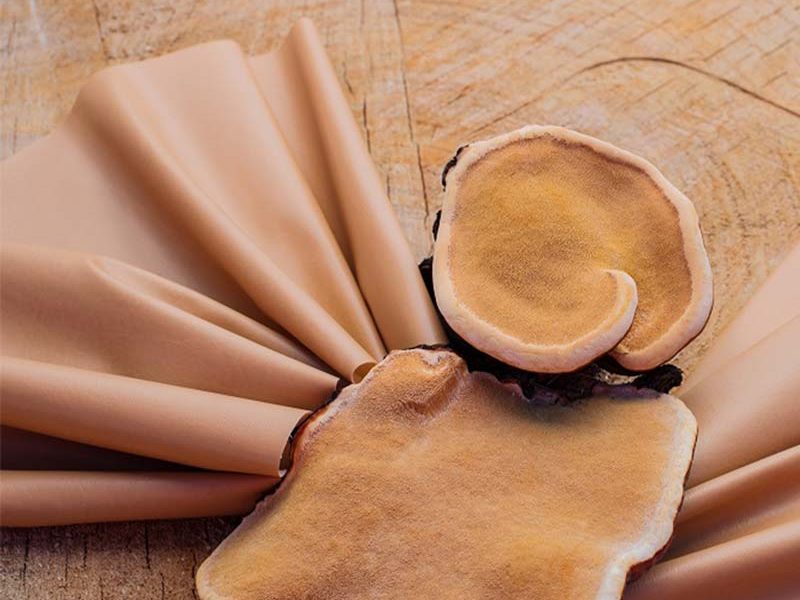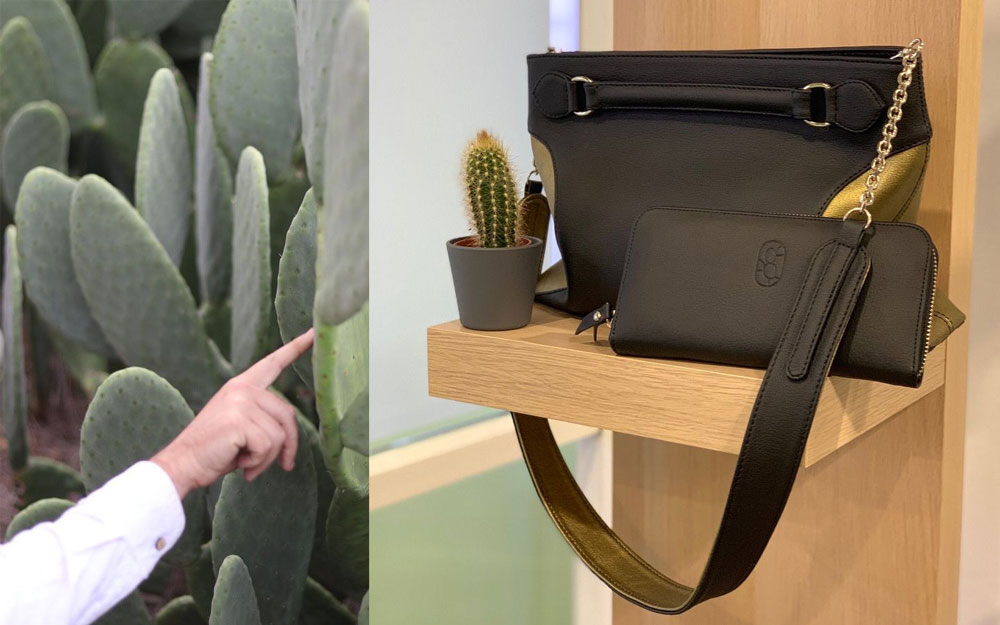
As a vegan and an advocate for sustainable fashion, I am incredibly excited about the future development of plant-based leather. This innovative material offers a cruelty-free and environmentally friendly alternative to traditional animal leather, and I believe it has the potential to revolutionize the fashion industry.
Another area of growth for plant-based leather is in the luxury market. While vegan fashion has traditionally been associated with low-quality and low-style clothing, plant-based leather is proving to be a versatile and high-quality material that can be used to create beautiful and fashionable garments. As more designers and fashion houses incorporate plant-based leather into their collections, it will become increasingly popular and mainstream.
Today I will give you a detailed introduction to these natural and non-polluting plant-based leather.
Plant-based leather is a type of material that is made using plant materials, rather than animal hide. It is often used as a cruelty-free and environmentally-friendly alternative to traditional leather. Plant-based leather can be made using a variety of plant materials, such as cork, bark, and even mushrooms. The specific process for making plant-based leather varies depending on the type of plant material being used, but it typically involves breaking down the plant fibers and then combining them with a binding agent to create a material that is similar in appearance and texture to animal leather.
One of the main advantages of Plant-based leather is its environmental friendliness. The production of animal leather is a highly polluting industry, with toxic chemicals such as chromium and formaldehyde commonly used in the tanning process. These chemicals can contaminate soil and water, leading to negative impacts on the environment and human health. In contrast, the production of Plant-based leather uses fewer toxic chemicals and produces less waste. Furthermore, some plant-based materials used to make Plant-based leather, such as cork and pineapple leaves, are considered waste products from other industries and would otherwise be discarded. By repurposing these materials, Plant-based leather production helps to reduce waste and conserve resources.

Another advantage of Plant-based leather is its durability. Many people are skeptical about the durability of Plant-based leather, believing that it is not as strong or long-lasting as animal leather. However, this is not the case. In fact, Plant-based leather can be just as durable as animal leather, with some types even more so. For example, cork leather is extremely resistant to water and scratches, making it a great choice for shoes and bags that will be exposed to the elements. Additionally, Plant-based leather can be treated with protective coatings to further enhance its durability and longevity.
In addition to its environmental and durability benefits, Plant-based leather is also a more humane option than animal leather. The production of animal leather often involves inhumane treatment of animals, including dehorning, branding, and tail docking. Furthermore, many animals used for leather are raised in cramped and unsanitary conditions, leading to significant animal suffering. In contrast, the production of Plant-based leather does not require the killing or mistreatment of animals. By choosing Plant-based leather, consumers can support a more compassionate and ethical industry.

Despite its many benefits, Plant-based leather is not without its drawbacks. One of the main challenges of Plant-based leather is its cost. In general, Plant-based leather is more expensive than animal leather, due to the high cost of plant-based materials and the labor-intensive production process. This can make it difficult for consumers to justify the higher price tag, especially when cheaper animal leather options are readily available.
Another challenge of Plant-based leather is its availability. Unlike animal leather, which is widely produced and sold, Plant-based leather is still a relatively niche market. As a result, consumers may have difficulty finding a wide range of Plant-based leather products, such as shoes and clothing, in mainstream stores. This can make it difficult for consumers to fully incorporate Plant-based leather into their wardrobe, limiting its potential impact on the market.
Despite these challenges, I believe that Plant-based leather is a valuable and important alternative to traditional animal leather. Its environmental, durability, and humane benefits make it a compelling choice for those looking to reduce their impact on the planet and support more ethical practices. As awareness of these issues grows, I hope to see a shift towards greater adoption of Plant-based leather, leading to a more sustainable and compassionate fashion industry.
Cork is a sustainable, renewable resource that can be harvested from trees without damaging them. It is then processed into a material that resembles leather, and can be used to make a wide range of products, such as bags, shoes, and accessories.
Pineapple leather, also known as “pineapple leaf fiber” or “Piñatex,” is made from the leaves of the pineapple plant. The leaves are harvested, dried, and then processed into a material that is similar in appearance and texture to leather. Pineapple leather is durable, flexible, and sustainable, making it a popular choice for a variety of products.

Mushroom leather, also known as “mushroom leather,” is made from the stems of mushrooms. The stems are processed into a material that has a leather-like appearance and feel, and can be used to make a range of products, such as shoes, bags, and accessories.

Corn leather is made from the fibers of corn stalks, which are processed into a material that resembles leather. It is a sustainable and eco-friendly alternative to traditional leather, and can be used to make a variety of products, such as shoes, bags, and accessories.

Coconut leather is made from the fibers of the coconut husk, which are processed into a material that resembles leather. It is a sustainable and durable alternative to traditional leather, and can be used to make a range of products, such as shoes, bags, and accessories.

Cactus leather is a type of plant-based leather that is made from the fibers of the cactus plant. It is considered to be a sustainable and environmentally-friendly alternative to traditional animal leather, as it can be produced without harming animals and requires less water and other resources to produce. Cactus leather is also durable and flexible, making it a good material for use in a variety of applications.

As someone who values sustainability and ethical consumerism, I have always been drawn to plant-based leathers over animal leathers. Here are some of the key differences between the two:
Sustainability: Plant-based leathers are much more sustainable than animal leathers. They are made from renewable resources, such as cork or mushroom, and do not require the same amount of resources, such as water and land, as animal leathers.
Ethics: Plant-based leathers do not involve the exploitation of animals, unlike animal leathers. The production of animal leather often involves cruel practices, such as dehorning and branding, which are not necessary for the production of plant-based leathers.
料金: Plant-based leathers are often more affordable than animal leathers. This is because they do not require the same level of resources and labor, and are not subject to the same market fluctuations as animal leathers.
耐久性: Plant-based leathers are often just as durable as animal leathers, if not more so. They are resistant to water, stains, and other environmental factors, and do not require the same level of care and maintenance as animal leathers.
Appearance: Plant-based leathers can be just as beautiful and stylish as animal leathers. They come in a wide range of colors and textures, and can be designed to mimic the appearance of animal leathers.
Comfort: Plant-based leathers are often more comfortable to wear than animal leathers. They are breathable, lightweight, and do not retain heat, making them ideal for use in shoes, bags, and other accessories.
Versatility: Plant-based leathers can be used in a wide range of applications, from fashion to furniture. They are versatile and can be molded into a variety of shapes and sizes, making them suitable for a wide range of products.
環境への影響: Plant-based leathers have a much lower environmental impact than animal leathers. They do not require the same amount of land, water, and energy, and do not contribute to pollution and waste in the same way as animal leathers.
Health: Plant-based leathers are often healthier for the user and the environment than animal leathers. They are hypoallergenic and do not contain chemicals, such as chromium, which are often used in the production of animal leathers.
Performance: Plant-based leathers often outperform animal leathers in terms of durability, comfort, and style. They are often more flexible and breathable, and do not require the same level of care and maintenance as animal leathers.
Overall, I believe that plant-based leathers are a better choice than animal leathers for those who value sustainability, ethics, and performance. They are more sustainable, affordable, and versatile, and do not involve the exploitation of animals. They also have a lower environmental impact and are healthier for both the user and the environment.
Some luxury brands that use vegetable-based leather in their products include:
Stella McCartney – uses a vegetable-based leather alternative called “Alter-Nappa” in their bags and shoes.
グッチ – uses a vegetable-based leather alternative called “Eco-Vegetable Tanned Leather” in their bags and accessories.
Hermes – uses a vegetable-based leather alternative called “Veau Trade” in their bags and accessories.
Tod’s – uses a vegetable-based leather alternative called “Tod’s Vegetable Tanned Leather” in their bags and shoes.
Vivienne Westwood – uses a vegetable-based leather alternative called “Vegetable Tanned Leather” in their bags and accessories.




Leading car brands that use vegetable-based leather in their products, including:
BMW & Minis: As of the 2023 model year, most BMW and Mini Cooper cars are available with primarily vegan materials.
Ford: The Ford Mustang Mach-E comes standard with all-vegan interiors, including a vegan steering wheel.
Mercedes: The EQXX is an all-electric car with a vegan interior featuring cutting-edge renewable materials made from mushrooms, bamboo, cactus, and vegan silk.
テスラ: The company’s Model 3 originally included a leather-wrapped steering wheel by default, but no longer. All new Model 3 and Model Y cars now ship with premium synthetic seats and a vegan steering wheel.
Toyota: While Toyota does offer leather seats and steering wheels in some models, it’s easy to find a vegan Toyota. Look for Softex, Toyota’s vegan leather alternative, in premium or upgraded Toyota models. Base model Toyotas generally come with cloth seats.
ボルボ: The company wants to make all cars leather-free by 2030, although it intends to continue offering wool blends. Edmunds reports that the model year 2022 C40 Recharge and all future electric vehicles will be leather-free.
I am confident that plant-based leather will continue to develop and improve in the coming years. As demand for sustainable and cruelty-free fashion grows, companies will invest more in research and development to create new and innovative plant-based materials. We are already seeing exciting advances in this field, such as the development of cork leather, which has the potential to be even more durable and water-resistant than traditional animal leather.
In conclusion, the future of plant-based leather looks bright. As consumers become more aware of the environmental and ethical implications of their fashion choices, plant-based leather will become an increasingly attractive option. With its cruelty-free, sustainable, and stylish benefits, plant-based leather has the potential to revolutionize the fashion industry and create a more compassionate and environmentally friendly future.
コルクの多くの優れた特性に基づいて、コルクは革の最良の代替品の 1 つと考えられているコルク生地、コルク スポーツ製品、コルク バッグなどに加工できます。
低炭素で持続可能なプロジェクトを推進するには、適切なコルク製品を選択してください。
✅ 100%天然のFSC認証コルク原料
✅ 500以上のコルク生地パターン
✅ 革に匹敵する究極の品質
✅ ビーガンの環境に優しい裏地

時間を節約するために、すべての製品カタログの PDF 版もご用意しています。
すべての製品を PDF としてダウンロード
すべての製品を PDF としてダウンロード
時間を節約するために、すべての製品カタログの PDF 版もご用意しております。電子メールを残すだけで、すぐにダウンロード リンクを取得できます。
コルク生地に関する無料の見積もりと詳細な専門知識については、お問い合わせください。あなたのプロジェクトはHZCORKで適切なソリューションに出会います。
